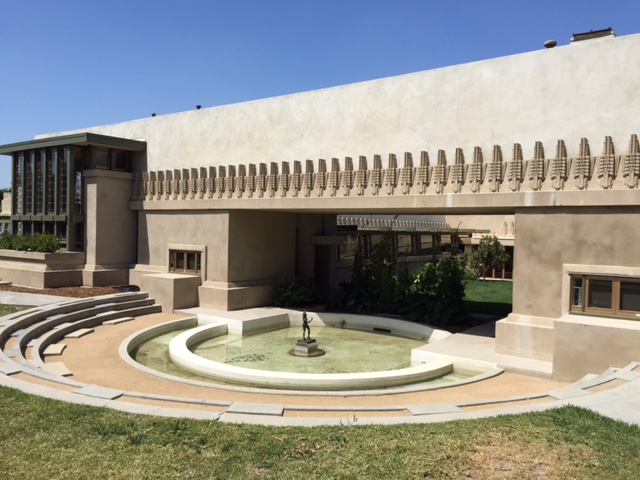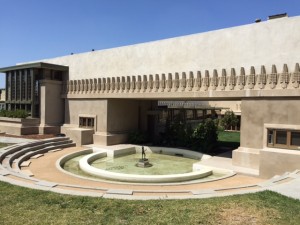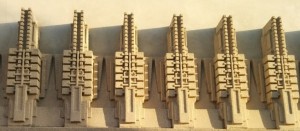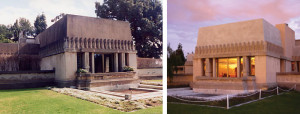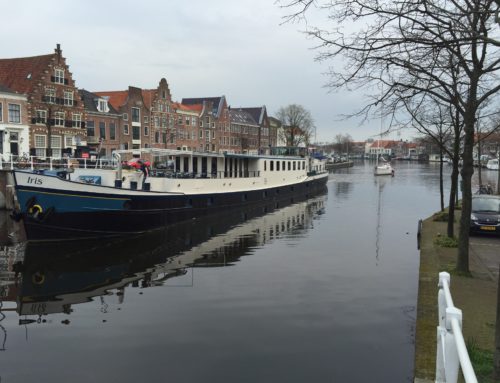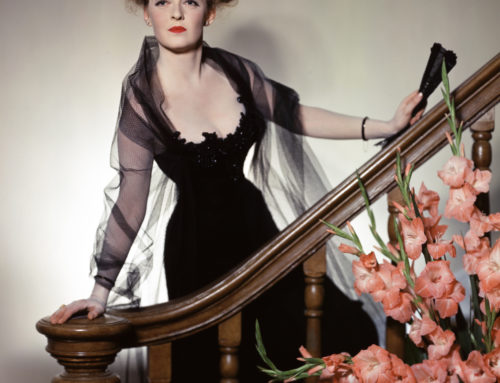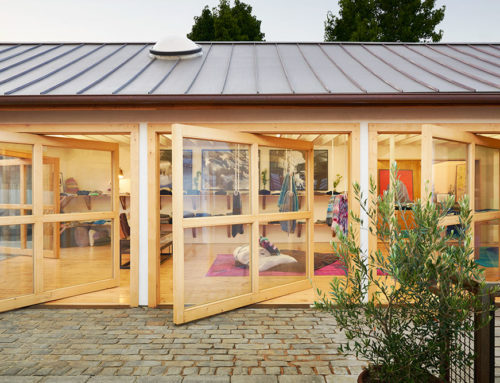L.A.’s Hollyhock House Reminds Me of Architect’s Genius
My passion for the built environment was stoked fast and furiously in my 30s when I returned to school to study design and architecture, but I think that love was always there, dormant in my DNA but wanting to get out. Take, for instance, my relationship with Frank Lloyd Wright.
Well, it wasn’t really a relationship. After all, he died when I was just a toddler. But I did have a connection with him and I was conscious of his existence at a young age.
My father and my uncle, both general contractors, worked for him and told me they recognized his genius (and his difficult nature). But they also told me that his vision sometimes couldn’t be matched by the technology of the time. Hence, as famous and brilliant as Wright was, his designs were also known for problems such as leaky roofs.
Which brings me to the Hollyhock House, the Wright gem in Barnsdall Park that was closed for four years while the City of Los Angeles, owner of the house, renovated the structure. It reopened in late 2014 and attracted busloads of people, demonstrating the sustained interest in the legendary architect.
Like many others, I looked forward to revisiting the stunning example of his interest in Mayan architecture and what was the first home he designed in this state (he called it “California Romanza”). The renovation, while not complete, was beautifully done and – I’m pleased to note – the house has been nominated as a UNESCO World Heritage Site.
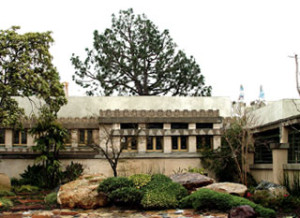
The Hollyhock House was Wright’s first in California. It has been nominated for UNESCO World Heritage Site status
I could easily write a book about the house, its free-spirited owner Aline Barnsdall and the fascinating history of its construction, including the tumultuous relationship between Barnsdall and Wright. The Barnsdall Park website provides a detailed accounting of that history, and I urge you to read it.
Here are some of the highlights of the house, as revealed to me by a private tour I recently arranged through my L.A. Decorative Arts, Interior Design & Architecture Meetup Group. Our outstanding docent was one of my former design students, Kimberly Reed.
Oil heiress Barnsdall in 1919 purchased the 36-acre plot of land in Los Feliz bounded by Vermont, Hollywood, Sunset and Edgemont, a plot that had been planted with olive trees by the owner. It had already achieved landmark status, being a prominent oasis in a rapidly developing area and was the site of annual Easter sunrise services.
Wright was not the only famous architect to work on the project. Both Rudolph Schindler and Richard Neutra had a hand in its design, as well as Wright’s son Lloyd and grandson Eric (who worked on one of the renovations).
From an architectural viewpoint, the home is striking for several reasons:
- Its indoor-outdoor flow – and incorporation of elements of earth, fire, air and water – demonstrate Wright’s status as an icon of American housing (he was disdainful of European architecture) and his philosophy that the house should be of the land.
- Its incorporation of Wright’s unique, abstract stylizing of elements of nature – in this case, the Hollyhock, Barnsdall’s favorite flower – is a repeated motif throughout the property.
- Its “compression and release” design of low-ceilinged hallways that opened into higher-ceilinged rooms.
- Its geometric bas-relief above the fireplace, water element in front of the fireplace, skylight, artglass throughout, and torchere uplighting in the living room were all examples of Wright’s distinctive and progressive design.
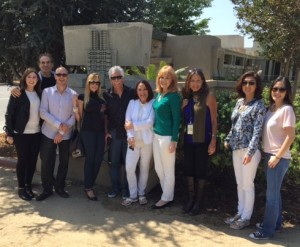
One of my recent Meetup groups got a private tour of the historic home, led by docent Kimberly Reed, my former student
These are just a few of the highlights you will discover on your visit. I encourage you to take a self-guided tour (Thursday-Sunday). Your discovery – or rediscovery – of this treasure will remind you of how exciting Los Angeles can be from an historical design standpoint.



